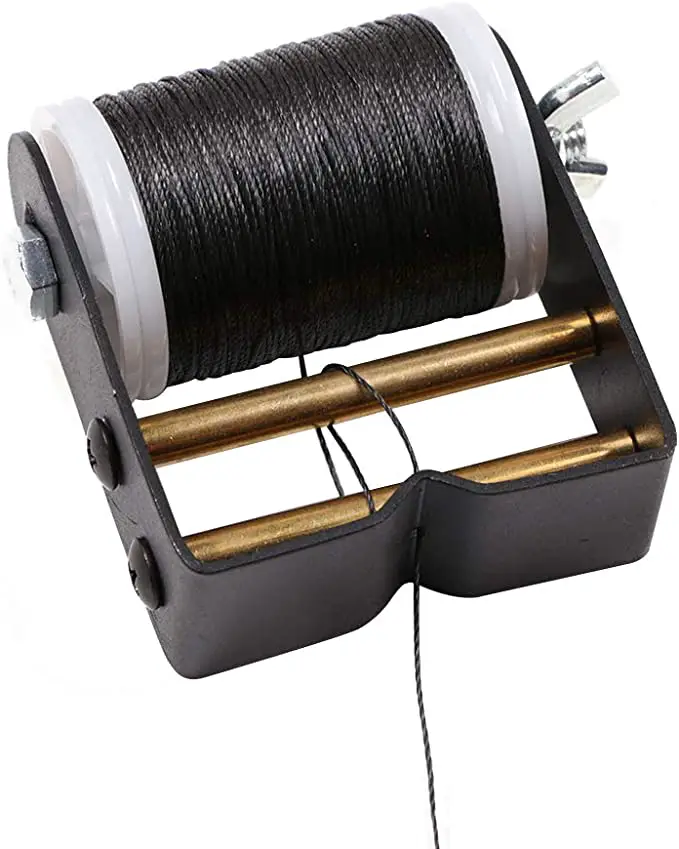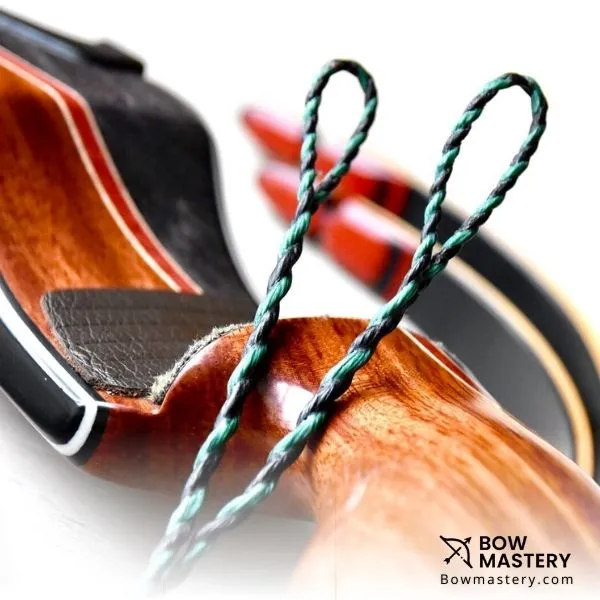How Much Is It To Restring A Bow? A Comprehensive Guide For Archery Enthusiasts
Let’s cut to the chase, folks. If you're into archery or own a compound, recurve, or traditional bow, there will come a time when you'll need to restring it. But here's the million-dollar question: how much does it cost to restring a bow? Well, the answer isn’t as straightforward as you might think. There are a ton of factors that come into play, from the type of bow you have to the materials used in the string. So buckle up, because we’re about to break it down for you in simple, no-nonsense terms.
Whether you're a beginner or a seasoned pro, understanding the cost of restringing a bow is crucial. You don’t want to be caught off guard when it's time to replace those worn-out strings. And let's face it, nobody likes surprises when it comes to money, right? So, let’s dive into the nitty-gritty and figure out what you’re really looking at when it comes to restringing costs.
But wait, there's more! This isn’t just about the price tag. We’ll also cover the importance of maintaining your bow, the best materials to use, and even some pro tips on how to save a buck or two. Think of this as your ultimate guide to restringing a bow—without all the fluff. Ready? Let’s get started!
Read also:Meet Sunny Hostins Two Kids Gabe And Paloma
Here's a quick rundown of what we'll cover:
- Cost Breakdown: How Much Does It Really Cost?
- Types of Bows and Their Stringing Needs
- Why Materials Matter
- The Restringing Process Explained
- DIY vs. Professional Restringing
- Maintenance Tips to Extend String Life
- When Should You Restring Your Bow?
- Cost-Saving Tips for Bow Owners
- Common Mistakes to Avoid
- Wrapping It All Up
Cost Breakdown: How Much Does It Really Cost?
Alright, let’s talk numbers. On average, restringing a bow can cost anywhere from $20 to $100. Crazy, right? But before you start hyperventilating, let me explain what factors influence this price range. First off, the type of bow matters a lot. Compound bows, for instance, tend to have more complex stringing requirements compared to recurve or traditional bows. So, if you’re rocking a compound setup, expect to pay closer to the higher end of that range.
Another factor is the material of the string. If you opt for premium materials like FastFlight or Dacron, you’re gonna shell out more cash. But hey, quality costs, and trust me, it’s worth it in the long run. Plus, some shops charge extra for labor, so make sure to ask about that before handing over your bow.
Now, here’s the kicker: if you’re handy with tools and have the patience to learn, you could save yourself a ton of money by restringing your bow yourself. We’ll dive deeper into that later, but for now, just know that DIY-ing it can cut your costs by half or more. Not bad, huh?
Types of Bows and Their Stringing Needs
Not all bows are created equal, and that applies to their stringing needs too. Let’s break it down:
Compound Bows
Compound bows are the tech-savvy ones of the bunch. They come with pulleys, cams, and all sorts of fancy gadgets that make them super efficient. But all that tech also means they require a bit more TLC when it comes to stringing. You’ll need specialized tools and, in some cases, professional help to ensure everything is set up correctly. Expect to pay around $50 to $100 for a professional restring job.
Read also:Diane Krugers Beach Adventures A Star Moms Journey To Style And Comfort
Recurve Bows
Recurve bows are the simpler cousins of compound bows. They don’t have all the bells and whistles, which makes them easier to restring. Most recurve bow owners can handle the job themselves with a little practice. If you decide to go the DIY route, you’re looking at a cost of around $20 to $40 for the string itself. Not too shabby!
Traditional Bows
Traditional bows, like longbows, are the OGs of archery. They’re all about simplicity and authenticity. Restringing a traditional bow is pretty straightforward, and most enthusiasts can do it themselves without breaking a sweat. Costs are usually on the lower end, ranging from $15 to $30 for a new string.
Why Materials Matter
Here’s a fun fact: the material of your bow string can make a huge difference in performance and durability. Let’s take a look at some of the most popular options:
- FastFlight: This is the Ferrari of bow strings. It’s super strong, lightweight, and offers incredible speed. But like all luxury items, it comes with a higher price tag.
- Dacron: Think of Dacron as the reliable family sedan. It’s durable, affordable, and perfect for beginners or casual archers. It might not be as fast as FastFlight, but it gets the job done.
- Kevlar: Kevlar strings are known for their strength and resistance to stretching. They’re a great middle-ground option for those who want a balance of performance and cost.
Choosing the right material depends on your skill level, budget, and how often you shoot. Don’t just go for the cheapest option—investing in quality will pay off in the long run.
The Restringing Process Explained
So, how exactly does restringing work? Well, it’s not rocket science, but it does require some attention to detail. Here’s a step-by-step guide:
- Inspect Your Bow: Before you start, make sure your bow is in good condition. Check for any damage or wear that could affect the restringing process.
- Remove the Old String: Carefully remove the old string, making sure not to damage any other parts of the bow.
- Install the New String: Follow the manufacturer’s instructions to properly install the new string. This might involve using a bow press for compound bows.
- Tune and Test: Once the new string is in place, tune your bow and test it out to ensure everything is working smoothly.
Remember, if you’re not confident in your skills, it’s always better to seek professional help. Nobody wants to end up with a broken bow or, worse, an injury.
DIY vs. Professional Restringing
This is the big debate: should you restring your bow yourself or leave it to the pros? Both options have their pros and cons. Going the DIY route can save you a ton of money, but it does require some time and effort to learn the process. Plus, you’ll need to invest in tools like a bow press if you’re working on a compound bow.
On the other hand, hiring a professional ensures that your bow is restringed correctly and safely. It might cost more upfront, but it can save you from costly mistakes down the line. Ultimately, the choice depends on your comfort level and how much time you’re willing to invest.
Maintenance Tips to Extend String Life
Here’s the deal: taking care of your bow string can significantly extend its lifespan. Regular maintenance is key, and it doesn’t have to be complicated. Here are a few tips:
- Wax Your String: Waxing your string helps protect it from moisture and dirt, which can cause wear and tear. Do this after every few shooting sessions.
- Store Properly: Keep your bow in a cool, dry place when not in use. Extreme temperatures can damage the string over time.
- Avoid Over-Tension: Don’t leave your bow strung for extended periods if you’re not using it. This can put unnecessary stress on the string.
By following these simple tips, you can get the most out of your bow string and avoid unnecessary restringing costs.
When Should You Restring Your Bow?
Knowing when to restring your bow is just as important as knowing how to do it. Here are some signs that it’s time for a change:
- Visible Wear: If you notice fraying or other signs of wear on your string, it’s time for a replacement.
- Loss of Performance: If your bow isn’t shooting as well as it used to, a worn-out string could be the culprit.
- Regular Use: Even if your string looks fine, it’s a good idea to replace it every 1-2 years if you shoot frequently.
Don’t wait until your string breaks to take action. Preventive maintenance is always the best policy.
Cost-Saving Tips for Bow Owners
Who doesn’t love saving money? Here are a few ways to keep your restringing costs down:
- Buy in Bulk: If you shoot a lot, consider buying strings in bulk. You’ll usually get a discount for purchasing multiple at once.
- Learn DIY Skills: As we’ve discussed, restringing your bow yourself can save you a bundle. Invest in the right tools and practice until you’re confident.
- Shop Around: Don’t settle for the first price you see. Compare prices from different shops or online retailers to find the best deal.
Small changes can add up to big savings over time. Plus, learning new skills is always a win-win.
Common Mistakes to Avoid
Even the best of us make mistakes, but when it comes to restringing your bow, some errors can be costly. Here are a few to watch out for:
- Using the Wrong String: Make sure you’re using a string that’s compatible with your bow. Using the wrong one can lead to poor performance or even damage.
- Skipping Maintenance: Neglecting regular maintenance can shorten the lifespan of your string, forcing you to restring more often than necessary.
- Over-Tightening: If you’re restringing yourself, be careful not to over-tighten the string. This can cause unnecessary stress on your bow.
By avoiding these common pitfalls, you’ll save yourself a lot of headaches—and money—in the long run.
Wrapping It All Up
So, there you have it, folks. Restringing a bow doesn’t have to be a mystery. By understanding the costs, materials, and maintenance involved, you can make informed decisions that keep your bow in top shape. Whether you choose to go the DIY route or leave it to the pros, the key is to take care of your equipment and enjoy the sport to the fullest.
Now, here’s where you come in. Got any questions or tips of your own? Drop them in the comments below. And if you found this guide helpful, don’t forget to share it with your fellow archers. Together, we can all become better bow owners—one string at a time!
Article Recommendations


